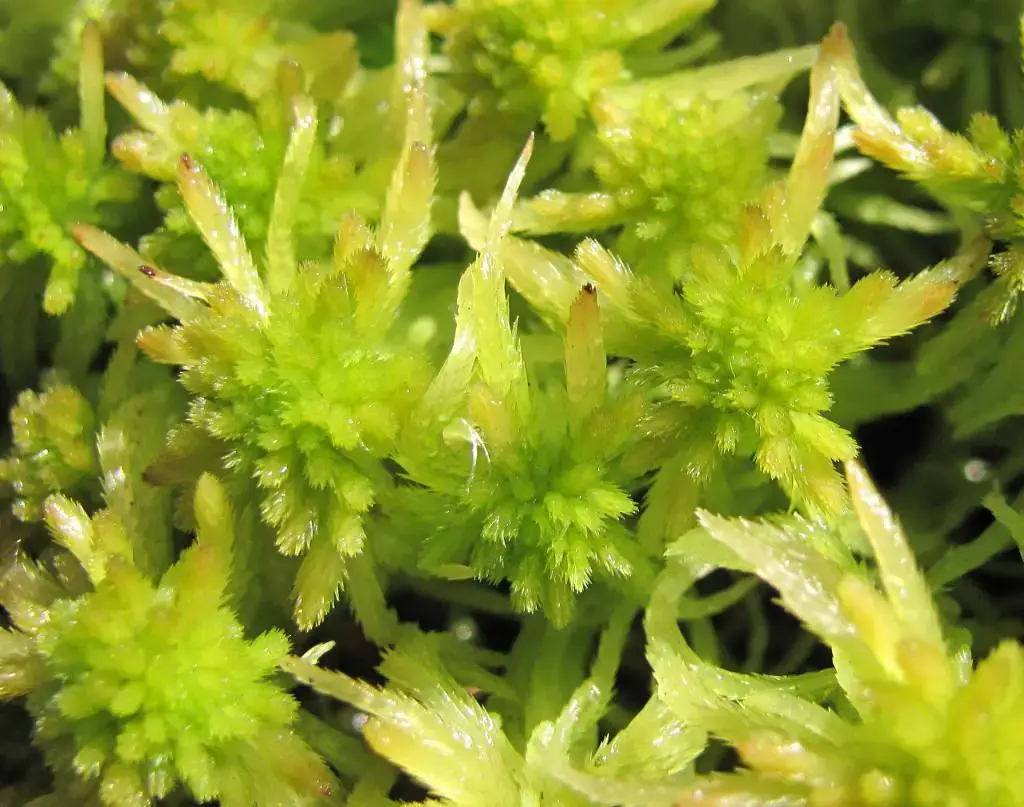
247810.jpg from: https://inpn.mnhn.fr/espece/cd_nom/6722
Sphagnum angustifolium: The Narrow-Leaved Peat Moss
Introduction
Sphagnum angustifolium (Russow) C.E.O.Jensen, also known as narrow-leaved peat moss or simply Sphagnum, is a fascinating species of moss belonging to the Sphagnaceae family. This unassuming plant plays a crucial role in its ecosystem and has some remarkable adaptations. Let’s dive in and learn more about this intriguing moss!
Background
Sphagnum angustifolium is a species of Sphagnum moss, which are non-vascular plants in the division Bryophyta and class Sphagnopsida. Sphagnum mosses are commonly referred to as “peat mosses” because as they grow and die, their remains accumulate to form peat. Peat mosses often dominate the vegetation in acidic, waterlogged habitats like bogs and fens.
Morphology and Identification

Sphagnum-balticum-Russow-CEOJensen-Hydrated-shoots-from-lectotype-of-S-recurvum.png from: https://www.researchgate.net/figure/Sphagnum-balticum-Russow-CEOJensen-Hydrated-shoots-from-lectotype-of-S-recurvum_fig2_359508405
S. angustifolium gets its name from its distinctively narrow, pointed leaves. The shoots are slender and can grow up to 20 cm long. Like other Sphagnum mosses, it has clusters of branches along the stem – usually 3-5 spreading branches and 2-3 pendent branches per fascicle. The leaves lack a midrib and are composed of two types of cells:
- Large, empty hyaline cells with pores that absorb and store water
- Smaller chlorophyllose cells that carry out photosynthesis
Under a microscope, the leaf cross-section is diagnostic, with the chlorophyllose cells triangular and mostly exposed on the concave surface.
Global Distribution and Habitat
S. angustifolium has a circumboreal distribution, found throughout the cooler regions of the Northern Hemisphere including much of Canada, northern USA, Greenland, Europe, and Asia. It commonly grows in
Sphagnum-balticum-Russow-CEOJensen-A-Stem-with-branches-removed-illustrating.ppm from: https://www.researchgate.net/figure/Sphagnum-balticum-Russow-CEOJensen-A-Stem-with-branches-removed-illustrating_fig3_359508405
acidic peatlands like bogs, poor fens, and moist coniferous forests. It can form extensive carpets but also grows intermixed with other Sphagnum species.

409003_b24b4c81.jpg from: https://www.plantarium.ru/page/image/id/409003.html
Ecological Roles and Adaptations
Like other Sphagnum mosses, S. angustifolium plays a vital role as a “habitat engineer” in peatland ecosystems. Its unique adaptations allow it to thrive in waterlogged, nutrient-poor, and acidic conditions:
- Absorbs water like a sponge, holding up to 20x its dry weight in water
- Efficiently captures nutrients from rainwater and air
- Acidifies its surroundings by exchanging H+ ions for other cations
- Resistant to decay due to phenolic compounds
As it grows, it

Sphagnum-balticum-Russow-CEOJensen-A-Inner-perichaetial-leaf-B-Antheridium_Q640.jpg from: https://www.researchgate.net/figure/Sphagnum-balticum-Russow-CEOJensen-A-Inner-perichaetial-leaf-B-Antheridium_fig4_359508405

409002_ca5cc86b.jpg from: https://www.plantarium.ru/page/image/id/409002.html
slowly creates and expands the peatland habitat, providing the foundation for a unique assemblage of plants and animals. Sphagnum peat also serves as a significant carbon sink, with peatlands storing about 1/3 of the world’s soil carbon despite covering only 3% of land area.

forest-floor-with-colourful-sphagnum-moss-sphagnum-angustifolium-reindeer-lichen-cladonia-portentosa-and-scots-pine-seedling-pinus-sylvestris-2A6JPYT.jpg from: https://www.alamy.com/stock-photo/sphagnum-angustifolium.html

447685_de91421f.jpg from: https://www.plantarium.ru/page/image/id/447685.html

Sphagnum-flexuosum-408-800×600.jpg from: https://www.britishbryologicalsociety.org.uk/learning/species-finder/sphagnum-angustifolium/
| Trait | Adaptation |
|---|---|
| Hyaline cells | Absorb and retain water |
| Acidifying ability | Modifies habitat, excludes competitors |
| Decay resistance | Allows peat accumulation |
| Efficient nutrient capture | Thrives in nutrient-poor conditions |
Conclusion
Sphagnum angustifolium may be small, but it punches above its weight in ecological importance. This mighty moss engineers ecosystems, stores carbon, and displays some incredible adaptations. Next time you’re in a northern peatland, take a moment to appreciate the expansive carpets of Sphagnum – and the key role played by unsung species like S. angustifolium. What other small but mighty organisms can you think of?

579179_7bceca88.jpg from: https://www.plantarium.ru/page/image/id/579179.html